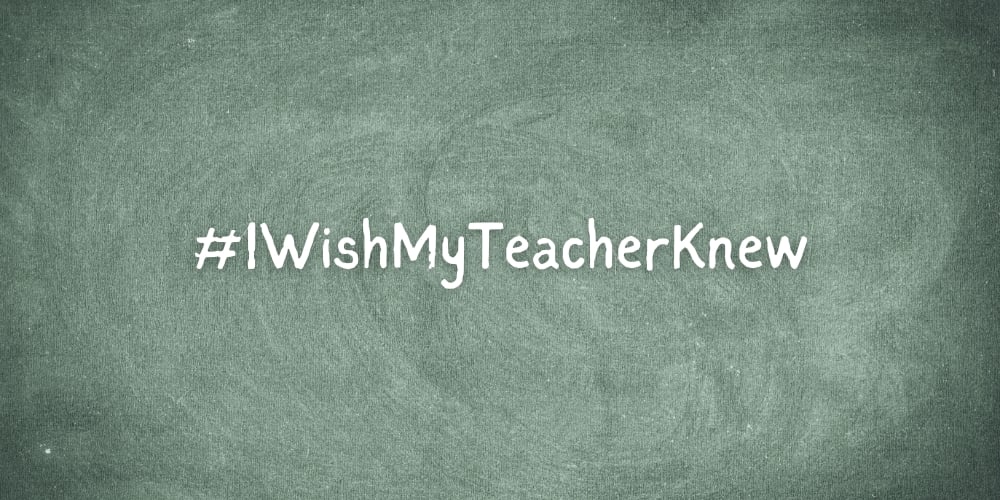We need to be careful…
I recently learned about the seminal work of Neel Doshi and Lindsey McGregor in understanding organizational culture, and it was a good reminder that we need to be careful as we rethink the role of technology in teaching and learning. Why the caution? First, let me share a bit about what they found were the elements of culture that most impact performance, and then together we can unpack the connections between those elements and how technology should, and should not, be used to enhance teaching and learning.
We start with culture. What’s makes culture so interesting is it seems mysterious. We all have heard the names of the organizations with great cultures (Southwest Airlines, Zappos), yet it’s hard for most of us to articulate what elements they share to make their cultures so great. I am reminded of teaching and learning, where the same sense of mystery pervades. We may see a teacher create an incredible learning environment in her classroom – one that takes our breath away – and yet we have no idea what elements in the school culture are motivating that teacher to perform at the top of her game.
So what makes Neel and Lindsey’s work so compelling is that they examined culture scientifically to help remove the mystery and identify the elements that make a culture strong and thereby increase organization-wide performance.
Some of what they learned weren’t surprising to me – that when a sense of purpose motivates us, our performance level goes up; when compensation motivates us, our performance level can go down.
What was surprising, though, was the importance of “Play” in motivating us to perform our best at work. Play – having the opportunity to be creative and to solve problems – is the element that has the biggest impact on our performance. And this finding is critical to the education sphere, particularly now as personalization and digital learning are taking off.
What Neel and Lindsay’s finding tells us about Play is that what matters, and matters deeply, is how our roles at work are constructed. In the case of teachers, we need to ask ourselves this: As technology begins to pervade education, are teachers encouraged to use that technology to be creative and to solve problems, or does the technology serve to narrow teachers’ roles and lower their ability to Play? The answer is not easy. There is no simple equation of “teacher + technology = personalization, which drives better student outcomes.” We have to get the teachers’ role right, or we could end up with worse student outcomes overall.
The auto industry offers an interesting analogy here. In the early 1900s, Henry Ford used technology to perfect the assembly line technique of mass production that was already gaining momentum at the time. This technique narrowed factory workers’ roles so much so that one person might work on just one screw on the left door handle. This model generated significant productivity gains at the time, yet, there were early signs that this approach was not likely to last – in fact, when the assembly line was first introduced (1913), the company had to hire 963 workers in order to add just 100 men to its factory floor due to the “natural distaste the assembly line seems to have inspired.”
Almost 70 years later, workers’ roles on the assembly line took a new turn. General Motors had to close its factory in Freemont, CA due to poor productivity, poor quality, and extensive labor troubles. It re-opened two years later (1984) as a joint venture with Toyota – the most productive car manufacturing company in the world. Toyota re-hired 85% of the workers, had the same union, and used basically the same equipment, yet under Toyota’s leadership, productivity went up 49% and almost reached the level of Toyota’s most productive factory in Japan. Toyota turned the culture and processes in Freemont upside down by introducing the “Toyota Way” which focused on continuous improvement and respect for people. Ford and General Motors viewed factory workers as a “replaceable variable cost component” while Toyota viewed its workers as the key for productivity and quality improvements. Toyota enabled their factory workers to Play – to come up with new tools and ideas on the assembly line that helped to make the organization stronger. As one article points out “Employees have to operate in a culture where they constantly grapple with challenges and problems and must come up with fresh ideas. That’s why Toyota constantly gets better.”
For me, the lesson learned is that Play (having the opportunity to be creative and to solve problems) matters. We can use technology to turn what was once a craftsman’s job into something narrow and lacking in Play, and we might be able to squeeze some productivity gains out of this arrangement (particularly if no one else is operating efficiently). But in the end, the most powerful and long-lasting productivity gains happen when human roles are constructed to encourage Play. For teachers, that means using technology as a tool to become more creative, not less – something we are very much focused on at PowerMyLearning, where the teachers we support receive the opportunity to experiment with different classroom set-ups, student groupings, content sequencing, and ways to encourage self-directed learning. In all cases, we first share best practices in pedagogy and content and then encourage teachers to make modifications that will enable them to meet best the needs of all their students. Thanks to Neel and Lindsey, I now understand why 95% of our teachers grow in their teacher practices each year and why 84% say our professional development is some of the best they have ever had in their careers.
I shared earlier that the underlying elements of a great school culture can sometimes be mysterious. There’s now good reason for all of us to look carefully for one particular ingredient – the Play of the teachers. Because it is when teachers are creative and solving problems that you know you are in the midst of a school culture where teachers are continuously striving to improve their game – and that’s the kind of a high-performing learning environment we should want for all our kids.
To learn more, you can check out Neel and Lindsay’s book.


